'I will be happy when Indians will get to see a plane made by an Indian taking to the skies.'

Captain Amol Yadav, a Mumbai resident, had his dream come to fruition when he got the Special Flight Permit from India's civil aviation regulator, the Directorate General of Civil Aviation, on October 18, 2019.
It's another matter that the Indian system and bureaucracy, so heavily loaded against innovation and entrepreneurship, made his 19-year-struggle all the more painful when he approached the DGCA for the first time in 2004 with his application for building an airplane.
While the DGCA rejected him outright, Captain Yadav kept knocking at its doors. The DGCA finally accepted his application in 2011. But that was not the end of his struggles with the regulator.
With a burning desire to create aviation history, fulfil his dream and keep the faith of his family and friends Captain Yadav persevered and finally got the Special Flight Permit this month, but not before Maharashtra Chief Minister Devendra Fadnavis and Prime Minister Narendra Damodardas Modi intervened.
Captain Yadav got a patient ear from Fadnavis to whom he explained the challenges he faced to get the Special Flight Permit from the DGCA for an airplane he had indigenously designed and made in India.
When Modi intervened, says Captain Yadav, the DGCA reintroduced certain rules in 2019 which it had deleted in 2014, when he approached the regulatory body for registering the airplane he had built in India for which he has spent Rs 6 crore (Rs 60 million) of funds with the help of family and friends.
'I extend full support from my side. Whatever it is, please keep me informed. I would want to know the progress of your project after December,' Modi told the aviator at his office a day after Captain Yadav received the DGCA's permission to take his airplane for a 40-hour test flight which he hopes to complete in the next four months.
"I am the first one in India who is making an airplane after 70 years of Independence. In India it is the first airplane to receive permission to fly built by an individual, without any support from the industry. To me, it feels like a great achievement," Captain Yadav, currently a pilot at an Indian airline, tell Rediff.com's Prasanna D Zore.
Could you describe your struggle while getting the permission to build India's first indigenous aircraft?
What were the challenges you faced getting the DGCA's approval?
It has taken me almost 19 years to get the permission to fly, to get the final nod from the DGCA. I've been working on this project for 19 years.
Making an airplane in India is happening for the first time. For the first time somebody has attempted to successfully build an indigenous aircraft.
It is me who, after 70 years of Independence, has reached the stage of getting the Special Flight Permit to fly (from the DGCA) an Indian-designed airplane.
What are the next challenges?
Since this has happened in India for the first time, it was also DGCA's first experience to give such permission. They were very careful about it; they inspected our airplane very, very minutely, and finally they have issued the permit to fly.
Now, it is for me to undertake a 40-hour test flight of the airplane and submit all the details to the DGCA.
It's a challenge to finish the test flying now, but it is it is within my capacity.
Now no agency can stop me or delay my project, or delay the test flight.
Hopefully, we will start test flights within the next three months.
What are the technicalities you will have to complete for the success of this test flight?
As per DGCA regulations, once we make the airplane, the airplane has to be tested for 40 hours of flying fulfilling various norms and doing various manoeuvres.
We have to comply with the technical rules set by the DGCA for such test flights; we have to rectify if there are any problems while flying and complete those 40 hours and submit the reports to the DGCA.
We will have to undertake these 40 hours of flying along with flight experts and DGCA officials. There are some strict compliance rules to meet for this test, but I am sure we will be able to complete this challenge very soon.
By when do you think you will be able to complete 40 hours of test flight?
I expect to complete the documentation to start the test flight in the next two months.
When we begin the first test flight, initially we will complete the first ten hours and submit our compliance report to the DGCA and get further clearance for the next 30 hours.
I expect to complete these 40 hours in the next three to four months.
What happens once you have completed the 40 hours of test flight?
Once you complete your 40 hours, you have to submit all the documents to the DGCA. After scrutinising all the documents the DGCA will issue the Special Airworthiness Certificate to the airplane we designed.
Our ultimate aim is to get the Special Airworthiness Certificate from the DGCA.
What does the Special Airworthiness Certificate mean for your project?
The certificate confirms the capability of Indians to make the airplane, that we can comply with the strict rules set by the DGCA. That is what we want to prove. That will be proof of our competencies of making airplanes in India.
Once we prove our competencies, we can go ahead and start the manufacturing process.
You have signed an MoU with the Maharashtra government worth Rs 35,000 crore to manufacture aircraft designed by you in Palghar?
Until the regulatory authorities give us the permission we cannot move ahead.
Until now we did not have the permission. Now that we have got the permission and we are sure of completing the 40 hour test flight in the next four months, we can start the next stage of the MoU signed between my company and the government of Maharashtra.
Tell us about the airplane you designed and built.
The airplane which we have built and designed for which the DGCA has now given the permission to fly is a six-seat indigenously built airplane.
Once these tests are completed we will be going for a 19-seater airplane to be built indigenously in India.
For this we have signed a deal with Pratt&Whitney Canada. They have already built the engines for us.

When do you think India's first indigenously built aircraft will be airborne?
It should get airborne before the end of this year. I will release videos of our indigenous built airplane once the test flights are completed.
When will the airplanes built by you be up for commercial sale?
To start commercial sales, we need to start manufacturing and that will happen only after we get the Special Airworthiness Certificate for this six-seat airplane. The process is on and it is not going to take more than four or five months.
The 19-seater airplane on which we have actually worked is almost 30% ready. Even the engines are ready in Pratt&Whitney Canada.
I can't say more than this because I do not have the capability to infuse more funds into this project.
I have already invested Rs 6 crore into this project and that is a lot of money. It is self-funded with the help of my friends and family's hard-earned money. I need the government support to proceed further now.
For 19 long years your friends and family had the faith in you that you will someday achieve your dream. How close are you towards achieving that dream?
Getting the permission to fly is a big achievement. Testing the airplane is a challenge, but we have achieved a lot of that already. I'm really close to see the airplane going airborne soon.
Tell us about how you got the DGCA approval.
The DGCA did its last inspection in Dhule on September 12, 2019 (that is where Captain Amol Yadav's airplane is located). Six DGCA officers were present for this final inspection of the airplane. They filed their observations on September 25.
Since that day till October 18 I have been giving them all the documents and calculations (of how the airplane works) that they wanted.
For the last whole week I had been at the DGCA. I would go there; sit at their office; provide whatever they wanted. Finally they issued the Special Flight Permit on October 18.
How important is the Special Flight Permit for your dream of flying India's first home-built airplane?
Until now (getting the Special Flight Permit) you were not allowed officially to get airborne/ Now we can fly officially. Before the end of 2019 we would have completed at least the first ten hours of test flight.
We had completed all the necessary requirements in May 2019. At that time the DGCA asked me to get my airplane's landing gear tested, which was not there in the rules, at the National Aerospace Laboratory.
In June, very reluctantly I went to the NAL. I accepted all what they asked of me and gave all the exams the DGCA wanted me to go through at various agencies.
I accepted the challenge and surpassed all the hurdles. Finally, the DGCA had no room left to deny my airplane the Special Flight Permit.
How frustrating has this journey been for you?
It is very frustrating when you are not funded by anybody. When you are self-funded and have to go through all these trials and delays. It has been very, very, very frustrating.
How do you feel now that you have the Special Flight Permit?
I am happy, but I will be very happy once I get the Special Airworthiness Certificate. That is the next challenge but within my capability. Very soon we will achieve that.
I will be happy when Indians will get to see a plane made by an Indian taking to the skies.
I will be releasing videos of the test flights if I get the government's permission. Till then it would remain work half done.
You met Prime Minister Modi. Could you tell us what happened at the meeting?
After he called to congratulate me for getting the permission I went to meet him at his office yesterday (October 20).
It was a great meeting. I was expecting that I will have to inform him about the process. But as I entered his office, he got up from his chair, he came towards me and said, 'ho gaya aapka sapna poora (Finally, you have fulfilled your dream)'.
That was pretty unexpected. Even before I could explain things to him, he had all the information about my project.
He asked about the project, like what I expect to happen in the future?
I am the first one in India who is making an airplane after 70 years of Independence.
In India it is the first airplane to receive permission to fly built by an individual, without any support from the industry. To me, it feels like a great achievement.
Did Prime Minister Modi speak about supporting your endeavour going ahead?
He wanted to know about the project directly from me so I gave him lot of information.
When he heard what I had to say, he said, 'I extend full support from my side. Whatever it is, please keep me informed. I would want to know the progress of your project after December.'
Is it because of the prime minister's intervention that you got permission from the DGCA?
The DGCA deleted the rules in 2014. After that I filed so many RTIs with the DGCA.
There was a period between 2014 and 2017 when we Indians were not allowed to make airplanes in India.
As I was pursuing the registration of this airplane (with the DGCA), the DGCA was so reluctant to give me the registration that they deleted the rules.
Can you imagine this?
The DGCA deleted the rules?
Yes, they deleted the rule book.
What rule book did they delete?
The rules related to how to make airplanes in India, how to register the airplane and how to operate the airplane.
Since they deleted these rules, there was no provision to make the airplane. Even if you made the airplane, there was no provision to fly it.
Practically, that put an end to making airplanes in India. So, I informed the chief minister of Maharashtra who informed the prime minister and he gave the instructions to implement those rules again.
And so those rules got in force again. That is how we could begin the registration process again in 2017.
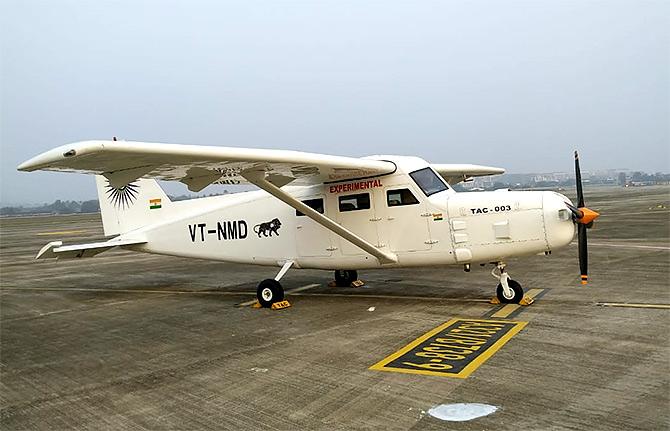
What did you do for these three years when the DGCA did not allow making airplanes in India?
I kept working at the airplane. I was asking questions of the DGCA through RTIs as to why they deleted the rule book; who were the officers involved; what were the procedures followed.
What was DGCA's response to your RTI queries?
The response was disastrous because they did not follow the procedure and I could prove this to the chief minister that the procedure was not followed correctly while deleting the rules.
The procedure is to get in place new rules when you delete the old rules, which was not done by the DGCA. Finally, they came up with the new rules (after the prime minister's intervention) and I could register my airplane.
Why did the DGCA delete the rule book?
I am the only person who had applied (to the DGCA) to register the airplane under those rules in the last 70 years.
So what exactly happens technically when the rules are deleted?
You can do whatever you want, but there will be no permission from the government because there is no provision to make airplanes.
Now that you have the permission to conduct test flights, do you one day see yourself competing with the likes of Airbus, Boeing etc?
I don't want to compete with anybody. India's need is tremendous; our geography, our infrastructure require lot of civil aviation activities and we need to start making our own airplanes.
Until we start building our own airplanes on a commercial basis we can't have sustainable regional connectivity connecting the smaller and smallest dots in India.
So, you think once you start manufacturing these aircraft in India, India's regional connectivity will grow exponentially?
That's what my aim is, that's what I want to do. I want to connect each and every part of India by air.
Your message to Indians who dream big, but have to go through trying times for whatever reasons...
Persevere with your dreams until you achieve them.
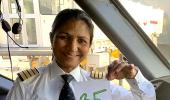







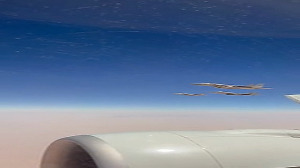
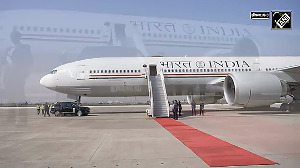
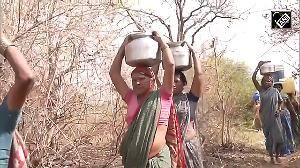
 © 2025
© 2025